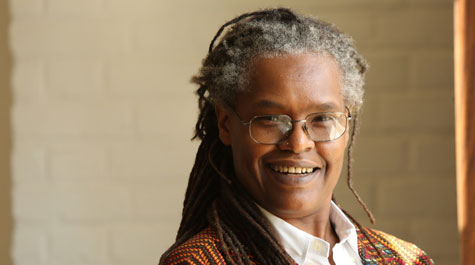W&M music professor looks at how American musician brought bebop to Europe
Growing up in North Carolina, Gayle Murchison often saw jazz musician Mary Lou Williams perform on local TV.
Thus began a career-long arc of circling back to study Williams for Murchison, associate professor of music at William & Mary.
“What are the gaps in her life?” Murchison said. “What are the aspects of her work and her position in the history of jazz that have not been covered?”
Currently in a new writing project, she is looking at Williams’ influence in introducing bebop or modern jazz to post-World War II Europe while she was there from 1952 to 1954. Murchison gave a lecture on the topic during her Oct. 15-16 Hartley Residency at Southampton University in the United Kingdom.
Williams was an American jazz pianist, composer and arranger. She spent two years in London and Paris in the mid-1950s with breakout tours to Belgium, the Netherlands, Germany and Switzerland.
As an African-American woman in that role at that time in Europe, Murchison said, Williams’ experience provides a point of entry for exploring music and the intersections of race, gender, labor, migration and immigration during the early 1950s. Williams played a role in introducing bebop to British, French and German audiences, each of which received modern jazz differently, a decade after it emerged in the U.S.
Murchison initially encountered her in a different setting, but has been involved with Williams’ music for approximately 40 years.
While teaching at Duke University in the 1970s during the latter part of her life, Williams made TV appearances on the Durham, North Carolina, station. She was featured on the local midday women’s show “At Home with Peggy Mann,” whom Murchison described as the local Martha Stewart of her day, as well as on a midnight Christmas service each year at Duke University Chapel.
Murchison did a paper on Williams as part of an independent study her senior year at Yale University. Later, while working as a DJ for the campus radio station, Murchison did a special on Williams and selected her music as part of the playlist. Almost 20 years ago, Murchison published the first of several papers on Williams.
While looking back on that work in the context of her interest in black European music, Murchison honed in on the mid-1950s period when Williams toured Europe.
“I’m particularly looking at this 1950s period because it was a very important period in her life, both personally and artistically,” Murchison said. “As well as looking at global events and histories in terms of what happens to various populations and what’s going on in Britain right now with what they call the Windrush generation, when they invited people because they needed to rebuild after the war.”
Williams happened to have been in Britain during two important times, according to Murchison. She arrived after 1948, which marks the beginning of the Windrush generation of black Brits, and the Notting Hill riots occurred a few years after she left. Her stay in Europe also coincided with the beginning of the Cold War.
Williams also performed in Germany during a period of de-Nazification. Joachim Berendt, a jazz critic and radio station program director who was trying to rehabilitate jazz and separate it from its Nazi past, invited her.
Jazz had two identities during World War II in Germany, according to Murchison. The Nazis banned it as a degenerate type of music, yet it was seen among the youth and some composers as a music of resistance.
“Through her, you can look at multiple things,” Murchison said. “One, just her experience as a musician who is far advanced of her audiences at this time in Europe. Two, she was brought over ostensibly as she was told to break a musician’s union ban on foreign musicians. So we get issues of migration and immigration.
“Three, this whole issue of labor and how musicians engage with their work conditions, regardless of where you are, about how much control does a musician have when it comes to promoters and agents and managers and owners of record labels when it comes to doing the business of being a musician.”
Williams was one of the people who helped disseminate bebop, modern jazz, to a Europe that had been cut off from the latest developments in jazz during the war in the early 1940s for about 10 years, according to Murchison.
“That’s one aspect of my work, looking at the reception of this modern jazz in London and in Paris here during this period, 1952-54, 10 years after it’s been developed in the United States,” she said. “But it hasn’t made it over to Britain or to Paris because of various immigration issues — what’s happened as Europe has tried to rebuild during this period after World War II.”
















